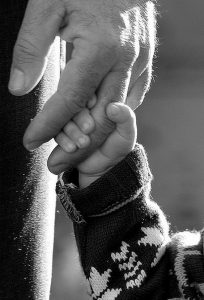My friend’s son was shot and killed last year on the streets of Chicago. The violence that I was so easily distancing myself from had finally touched me…directly.
As a mother, but also a therapist, I was desperate to understand.
The pain of this tragedy shook me to my very core. The manner in which her son was murdered was horrific.
People ask me how he died; if he was in a gang; if he did something terrible too. The answer(s) is: I am not sure, and honestly, I am not sure it matters.
It seems we ask these questions to distance ourselves from the pain, or to put some space between US and THEM.
It’s a way to defend against the fear. The fear of that kind of primitive, gut wrenching pain– the fear of that loss. It is much easier than facing the harsh reality that it can – and may – happen to anyone.
I deeply identified with her pain and my fear. I wanted to help my friend but I needed to help myself understand too.
I did the only thing I know how to do: I cried and cried, and then, I cried some more (I also encouraged her to seek therapy IMMEDIATELY, but this is for another post). I told the story over and over again, sometimes to friends and sometimes to myself. A realization came to me… one that I know but like to forget.
WE ARE ALL VULNERABLE.
This vulnerability makes us human and helps us to connect with others and with ourselves.
At any moment, something as sacred as our children, partner, best friend or parent, could be taken from us. It might be through gang violence, a heart attack, illness, suicide or an accident.
As result of this awakened awareness of my vulnerability, I hug my kids harder, I spend less time looking at my phone and more time talking to my husband. I try to connect with my friends, near and far, when they are on my mind.
Intense loss doesn’t have to be the catalyst to connect more deeply with those we love but, when we do–we inherently feel more connected to ourselves.
Connection challenge : This week, give yourself permission to be vulnerable with one person in your life. Tell them how you’re really doing and notice how it makes you feel.
Originally published at dramyrobbins.com


